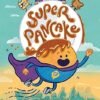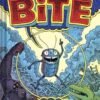Books That Break the Rules (In the Best Way!): 6 Wildly Creative Reads for Kids
This post contains affiliate links which means we may earn for purchases made through links. Read more.
Not all books play by the rules – and thank goodness for that.
Some books ditch the ordinary and dive straight into mind-bending art, hilarious layouts, surprise twists, or stories so original that they make your brain do a happy dance. This post pays tribute to books of that sort – the ones that grab your imagination, shakes your brain like a snow globe, and leaves you wide-eyed and tingly.
Whether your young reader is a reluctant bookworm, or a relentless page-turner, or somewhere in between, these books offer something wildly different. And bonus: they’re all recent works, so they’re fresh and ready to rock your bookshelf.
-
“This Book Is Banned” by Raj Haldar (2023)
Because what kid doesn’t want what they can’t have?
Let’s start with the book that practically dares you not to read it. “This Book Is Banned” is an outrageous, laugh-out-loud picture book that takes aim at banning books while slipping in broader themes about curiosity, freedom, and knowledge. It’s full of zany rules – “No bananas!” “No cats!” “No fun!” – and each “rule” invites even more silliness.
It’s funny, clever, and perfect to get kids talking and thinking about fairness, censorship, and what makes a book worth reading. Best of all? It never talks down to kids – it plays up.
Best For: Ages 5-9, little rebels, and kids who question everything.
-
“A Is for Bee: An Alphabet Book in Translation” by Ellen Heck (2023)
Spoiler: B is not for bee in every language.
This is not your normal A-B-C book. “A Is for Bee” is a multilingual look at language and how we name the same thing across different cultures. Did you know that in Igbo, Hungarian, and Turkish, the word for “bee” doesn’t start with B?
Each page pairs terrific illustrations of animals and objects with the way they’re named in languages spoken in different regions around the world – expanding both language and worldview. It’s well-designed and surprisingly deep – a globe-trotting adventure wrapped in a simple concept.
Best For: Ages 5-10, future linguists, and kids who ask “Why?” a lot.
-
“The Skull” by Jon Klassen (2023)
Spooky, silly, and completely unforgettable.
Jon Klassen (yep, the writer of “I Want My Hat Back”) returns this time, by giving us a dark fairy tale with a bit of dry humor and a many questions. “The Skull” tells the story of a girl who runs away and finds a mysterious skull in a big empty house.
It’s spooky without being scary, funny without being silly, and weird in the best way possible. Interweaving creepy illustration with a slow suspense built page by page, it’s a great pick for kids who enjoy a twist in their tales.
Best For: Ages 7-12, readers of Coraline, and kids who enjoy creepy mysteries.
-
“Invisible Things” by Andy J. Pizza & Sophie Miller (2023)
Because some of the best things are invisible.
What if you could see boredom? Or loneliness? Or joy? “Invisible Things” is a picture book that takes abstract emotions and turns them into colorful, silly, and lovable characters. It’s a big concept handled with color, humor, and a little weirdness.
This book is great for helping kids express their feelings – without it feeling like therapy. Think of it as Pixar’s Inside Out in book form, with a touch of graphic artistry.
Best For: Ages 5-10, sensitive souls, and kids navigating big emotions.
-
“Dog Man: Twenty Thousand Fleas Under the Sea” by Dav Pilkey (2023)
Underwater mayhem + comic-book chaos = endless laughs.
Dav Pilkey’s “Dog Man” series is a kid-magnet with energy. It’s part comic book, part action movie, part poop joke, and total fun. The latest installment, “Twenty Thousand Fleas Under the Sea,” brings back the beloved half-dog, half-cop hero to face an infestation of evil fleas.
It’s the kind of book that makes reluctant readers devour 240 pages in a single sitting. Filled with wacky art, flip-o-ramas, and nonsense; this book is creative chaos cover to cover.
Best For: Ages 6–12, comic lovers, and kids who believe books should be fun.
-
“The First Cat in Space Ate Pizza” by Mac Barnett & Shawn Harris (2022)
Yes, that’s the real title. And yes, it’s every bit as weird as it sounds.
In space, no one can hear you meow. Unless you’re the first cat on a mission to save the moon from being eaten by space rats.
This graphic novel is part absurd comedy, part epic sci-fi quest, and all imagination. Written as a comic adventure with crazy plot turns, talking cats, bizarre villains, and… pizza; it’s what you’d get if a kid wrote and directed a Star Wars movie.
Best For: Ages 8-13, fans of Diary of a Wimpy Kid and kids with offbeat senses of humor.
So Why Do These Books Matter?
All of these books stretch what a “kid’s book” can be. Some use humor to sneak in big ideas. Others use bold illustrations or wild plots to inspire creativity. What they have in common is that they respect kids. They assume young readers can handle weird, emotional, clever, complicated, or just plain silly – and they’re right!
When a book breaks the rules, it gives kids permission to break a few themselves (in the best, most imaginative way). It lets them laugh, wonder, think outside the box, and ask, “What if…?”
And right now, we need more “what if” in the world.
Bonus Round: Want Even More Wildly Creative Books?
Check out these other recent releases:
- “Big” by Vashti Harrison (2023) – A beautifully illustrated picture book about growing up and accepting yourself. Reading age 4+
- “The Labors of Hercules Beal” by Gary D. Schmidt (2023) – A modern spin on ancient myths, perfect for middle school readers. Reading age 10+
- “Super Pancake” by Megan Wagner Lloyd & Abhi Alwar (2023) – A graphic novel about a breakfast-themed superhero. Yes, really. Reading age 7-10
- “The Mighty Bite” by Nathan Hale (2023) – A humorous take on prehistoric creatures trying to go viral. It’s weird and wonderful.
- “Not Quite Narwhal” (Graphic Novel) by Jessie Sima (2023) – The beloved narwhal-unicorn tale gets a fresh comic-style update. Reading age 3-6
Conclusion: Let Kids Get Weird
Creativity is contagious. These books might seem a little goofy. They might not follow the standard formula. But that’s exactly why they’re perfect.
Whether it’s a cat in space, a rebel alphabet, or a talking skull in an old mansion, these books open the door to big ideas – ones that stick with kids long after they’ve closed the covers.
So go on and add a few of these to your cart, check them out from the library, or spread the word to other parents. Because when a kid finds that book – the one that makes them laugh, think, or say “I want to read it again!” – they don’t just fall in love with stories.
They fall in love with reading.
Books Mentioned














